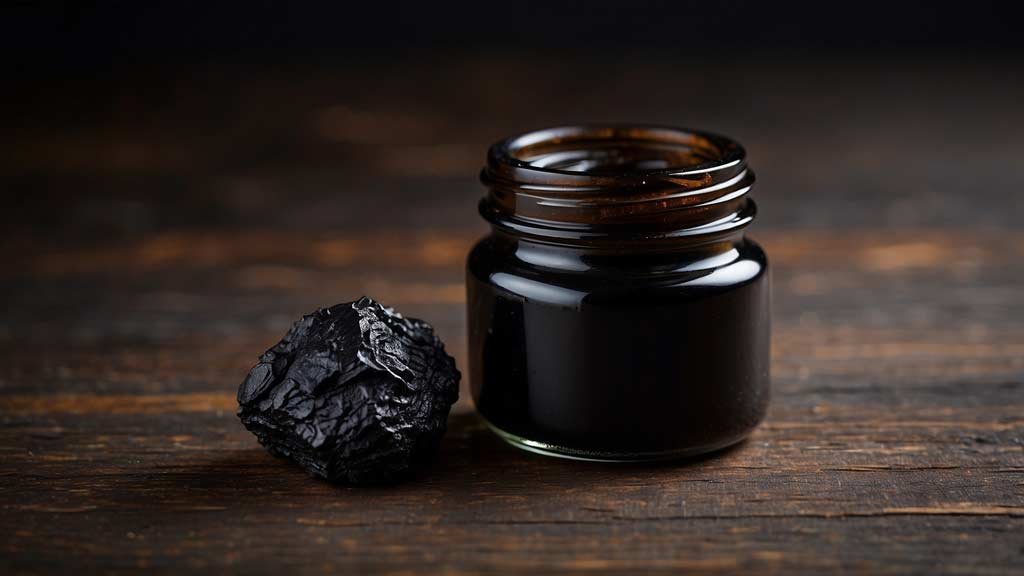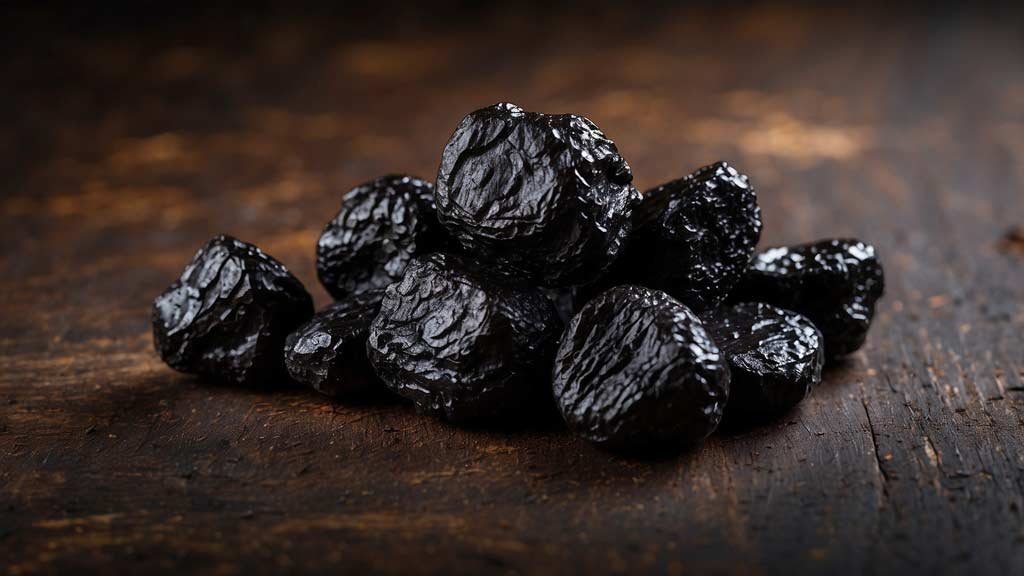What Exactly Is Shilajit?
Shilajit isn’t your typical herb. It’s not a mushroom either, though it often gets lumped into that world of natural medicines. Shilajit resin is sticky, tar-like, and seeps from the cracks of high mountain rocks, especially in the Himalayas, Altai, Caucasus, and Tibetan ranges. When temperatures rise, it oozes from the stone, almost like the mountain is sweating out centuries of decomposed plants, mosses, and microbial matter. That’s what makes it so unique: it’s the concentrated essence of geological and biological processes, condensed into a pitch that traditional healers have prized for thousands of years.
The word itself comes from Sanskrit—“conqueror of mountains and destroyer of weakness.” That gives you a sense of the reverence it held in Ayurvedic medicine. Modern science calls Shilajit resin a natural mineral pitch rich in fulvic acid, humic compounds, trace minerals, and bioactive molecules. In short, a dense cocktail of things your body craves but rarely gets in such potent form.
Table of Contents
Shilajit in Traditional Medicine
Ayurveda has long described Shilajit as a rasayana, a rejuvenator. Practitioners used it to restore vitality, sharpen memory, and improve longevity. It wasn’t just for the weak or ill—warriors and yogis took it as a daily tonic. Tibetan medicine also recognized it, mixing it with herbs to support strength and stamina at high altitudes.
What’s striking is how consistently cultures linked Shilajit resin with energy. In the Himalayas, herders consumed it to cope with the thin mountain air. In India, physicians prescribed it for fatigue and fertility. Across regions, people recognized it as something more than a supplement; it was considered a lifeforce enhancer.
The Chemistry of Vitality
When scientists began analyzing Shilajit resin, they found over 80 trace minerals in ionic form. That’s huge because the body absorbs minerals best when they’re in ionic states. More interesting, though, is fulvic acid. This compound acts as a transporter, binding nutrients and shuttling them deep into cells. Without it, even if you ate a mineral-rich diet, absorption could be poor. With it, nutrients actually get where they need to go.
Key components of Shilajit include:
- Fulvic acid: improves nutrient uptake, has antioxidant properties.
- Humic substances: support detoxification and microbial balance.
- Dibenzo-alpha-pyrones: protect mitochondria, the cell’s energy factories.
- Trace minerals: iron, zinc, magnesium, manganese, copper, selenium, and many more.
This cocktail works synergistically. Think of it like a symphony—no single instrument dominates, but together they create a powerful effect.
Energy and Stamina Support
If you’ve ever felt drained even after a good night’s sleep, you know how frustrating fatigue can be. Shilajit has been studied for its ability to support mitochondrial function, which is where your body literally makes energy (ATP). Animal studies show it helps preserve mitochondrial integrity under stress. Some human trials suggest daily supplementation can reduce fatigue and increase exercise capacity.
People who use Shilajit often describe it less as a caffeine-like buzz and more as a steady baseline of endurance. One man told me he started taking it before long hikes in Colorado. He noticed he could keep going without the usual mid-afternoon crash. It’s not magic—it’s biology working a bit more efficiently.
Cognitive and Mood Benefits
Beyond physical stamina, Shilajit has a reputation for sharpening the mind. Traditional texts linked it to improved memory and learning, and research today hints at neuroprotective effects. Fulvic acid seems to interfere with the buildup of tau proteins, which are implicated in neurodegenerative diseases.
Users sometimes report clearer thinking, quicker recall, and a lift in mood. It may also help stabilize stress responses by modulating cortisol levels. Imagine being in a chaotic environment but feeling steady, like your nervous system isn’t overreacting to every stimulus. That’s the kind of subtle shift many people describe.
Hormonal and Sexual Health
Ayurvedic doctors prescribed Shilajit for fertility and virility, and modern studies partially back this up. Men taking purified Shilajit have shown increases in total and free testosterone. Women have reported improvements in menstrual regularity and overall vitality, though research here is thinner.
Anecdotally, some couples use it as a natural aphrodisiac. Not in the flashy sense, but in restoring energy, mood, and hormonal balance—all the things that make intimacy easier. It’s less about instant sparks and more about maintaining the fire.
Adaptogenic Qualities
Shilajit resin shares traits with adaptogens like ashwagandha and rhodiola. It helps the body adapt to stress, whether physical, mental, or environmental. Athletes take it for recovery. Travelers use it for altitude sickness. Students lean on it during exam season.
What makes it stand apart is the mineral density. Where most adaptogens are purely plant-based, Shilajit resin is mineral-rich, giving it a dual edge: nourishment and regulation.

How to Take Shilajit
Most people consume it as a resin dissolved in warm water, milk, or tea. A pea-sized portion—about 300 to 500 mg—is a typical daily dose. Some prefer capsules or powders, though purists argue resin is closer to its natural form.
Use tips:
- Start small; see how your body responds.
- Take it in the morning for energy, or in the evening if it doesn’t interfere with sleep.
- Avoid mixing with chlorinated water—it can neutralize some compounds.
- Pair with warm milk or herbal tea for traditional use.
The taste? Bitter, smoky, slightly metallic. Some people love it, some tolerate it. Either way, it’s unmistakable.
Safety and Quality Concerns
Here’s the catch: Shilajit resin in raw form can contain heavy metals, mycotoxins, or contaminants. That’s why purification is essential. Traditional practitioners developed complex processes to remove impurities while keeping the resin’s potency.
If you’re buying Shilajit today, look for:
- Third-party lab testing for heavy metals and microbial safety.
- Authentic sourcing from high-altitude regions.
- Resin form over powders, unless well-certified.
- Transparent brands that disclose mineral content.
Side effects are rare at normal doses, but excessive intake may cause dizziness, increased uric acid, or digestive upset. Pregnant and breastfeeding women should avoid it, given the lack of safety data.
Modern Research and Debates
Clinical trials are still limited, but growing. Some show benefits for chronic fatigue, anemia, fertility, and cognitive health. Others remain inconclusive. Part of the challenge is standardization—no two Shilajit samples are identical, and composition varies by region and purification method.
Skeptics argue that until larger, controlled studies confirm the effects, Shilajit resin should be treated cautiously. Enthusiasts counter that centuries of traditional use speak louder than the relatively young field of clinical trials. Both have a point. The best stance may be measured curiosity—respecting tradition while demanding rigorous science.
My Take on Shilajit
I’ll admit, I was skeptical when I first heard about Shilajit. The idea of scraping black resin off a rock and eating it sounded more like a dare than a health practice. But after trying a carefully sourced resin, I noticed a tangible difference: more stable energy during long writing sessions, less of that 3 p.m. fog.
It’s not a miracle cure. It won’t replace sleep, good food, or exercise. But as a supplement, it can fill gaps that modern diets and lifestyles leave open. It feels like plugging into an older current—one that’s been running beneath human cultures for millennia.
Final Thoughts
Shilajit resin is strange, ancient, and still a bit mysterious. That’s part of its allure. It sits at the intersection of geology and biology, tradition and modernity. For those open to exploring natural tonics, it offers a way to support energy, vitality, and resilience in a world that constantly drains all three.
Article Sources
At AncientHerbsWisdom, our content relies on reputable sources, including peer-reviewed studies, to substantiate the information presented in our articles. Our primary objective is to ensure our content is thoroughly fact-checked, maintaining a commitment to accuracy, reliability, and trustworthiness.
- Pandit, S., Biswas, S., Jana, U., De, R. K., Mukhopadhyay, S. C., & Biswas, T. K. (2016). Clinical evaluation of purified Shilajit on testosterone levels in healthy volunteers. Andrologia, 48(5), 570-575. doi:10.1111/and.12482. https://pubmed.ncbi.nlm.nih.gov/26395129/
- Iqubal, A., et al. (2025). Shilajit: A herbo-mineral compound with multifaceted health benefits. International Journal of Basic & Clinical Pharmacology, 14(4), 630-640. https://www.ijbcp.com/index.php/ijbcp/article/download/5961/3870/25768
- Healthline. (2024, February 19). Shilajit: 9 Benefits, Side Effects, and More. Healthline. https://healthline.com/health/shilajit
- Cleveland Clinic. (2025, March 11). Shilajit Benefits, Side Effects and Uses. Health Essentials. https://health.clevelandclinic.org/shilajit-benefits
- Carrasco-Gallardo, C., et al. (2012). Shilajit: A Natural Phytocomplex with Potential Procognitive Activity. PMC. https://pmc.ncbi.nlm.nih.gov/articles/PMC3296184/
- Examine.com. (n.d.). Research Breakdown on Shilajit. Examine. https://examine.com/supplements/shilajit/research/

